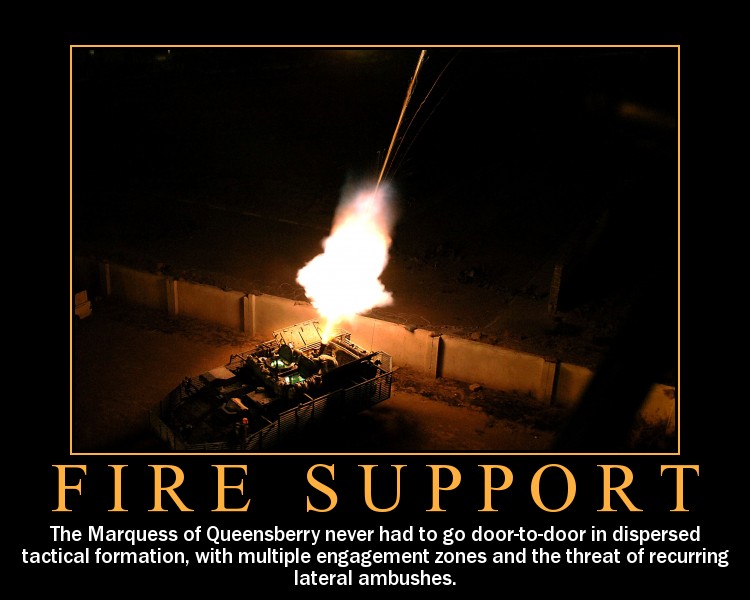For the remainder we might ask questions like "why didn't the enemy just burn the tower?" Isn't the answer mostly "because that wouldn't be fun"? Granted the DM probably constructed some logic to explain why these unfun things didn't happen, but was that logic not at some level a fig leaf?
The tower is made of stone, with battlements on top. The landward part is behind a curtain wall, and the riverward side is right over a river. You could try to burn the dock (which might not be all that successful since it's over a river), but it wouldn't do much to accomplish the goal of the raiders.
Their goal is to cause a distraction for the minor nobles of the land, so that they will want to keep their militias for home defense, rather than sending them to the front to fight a war as the ruler (the Margrave of Bissel) demands. This will weaken Bissel in the war, because fewer troops will be available at the front, and because it will cause political disputes, as the nobles who comply feel animosity for those who do not. Essentially, it's a terrorist mission.
Also, the raider force doesn't have a lot of arcane magic. It's lead by a half-orc assassin who's also a werewolf, as are his main colleagues. The most powerful spellcaster is a cleric of Iuz. The bulk of the manpower (er, orcpower) of the force at Orc Warrior 1's -- some infected with lycanthropy to make them much more deadly, some not yet infected. Plus lycanthropy is a really good way of spreading terror among the non-adventurers.
The enemy actually DID use flaming arrows to burn down the outlying village they attacked earlier. When the players were alerted to the attack, the PC with Horseshoes of Speed on his horse sped off and arrive there before the rest. He had a Crossbow with longer-range (I forget the rule reason) and a bunch of silver bolts, so he managed to cause enough damage to the werewolf leaders that they decided to retreat and let the fleeing villagers go -- only a handful died in the battle, which I fought out round by round for all the orcs and the village militia (lots of d20's, and lots of time since it's an email campaign). He actually got knighted for that.

How is that related to CaW v. CaS? Well, the enemy are actually being played as fully autonomous roleplayed creatures, with goals and actually trying to win. They had a mission before the PC's arrived, and if the PC's don't stop them, they'll try their darnedest to succeed at it -- the direct assault on the tower was only a second best to their original plan to raid the riverside villages and infect the locals with lycanthropy. And for the PC's, logistical elements like having Horseshoes of Speed turned out to be really important. The "fun" was mostly for the one the PC, while the others hurried, hurried to a fight that was over when they arrived.
I can't really imagine running the village attack scenario in a CaS game -- it wouldn't be fun to have all those NPC's doing a lot of the action, and only one PC getting to do something, and having him "spam" by following the same actions -- mounted crossbow firing, retreating from the enemy as needed and then sniping some more -- wouldn't be fun either.
I'm not trying to imply that "all out war" doesn't exist as a THEME, but I am stating it really isn't viable for a game to actually do it. There are always limits, even if they're rather implicit and now and then violated. The DM always limits the capabilities of the bad guys and does so in ways that tend to put the initiative in the hands of the players. This is of course also partly just a matter of DM resources. There are many players and only one DM. The players, if they're reasonably active and energetic, will always be a major generator of the action driving the story simply because they can focus more on that and they have more mental bandwidth. Still there's a residuum at the very least of "Lets not push it that far, it will stop being fun".
Thus my assertion that at some level there is always an element of sport in the game. It may be more or less explicit, but always exists.
I guess, but I think there's a pretty wide spectrum of how the game can be played. <shrug>

